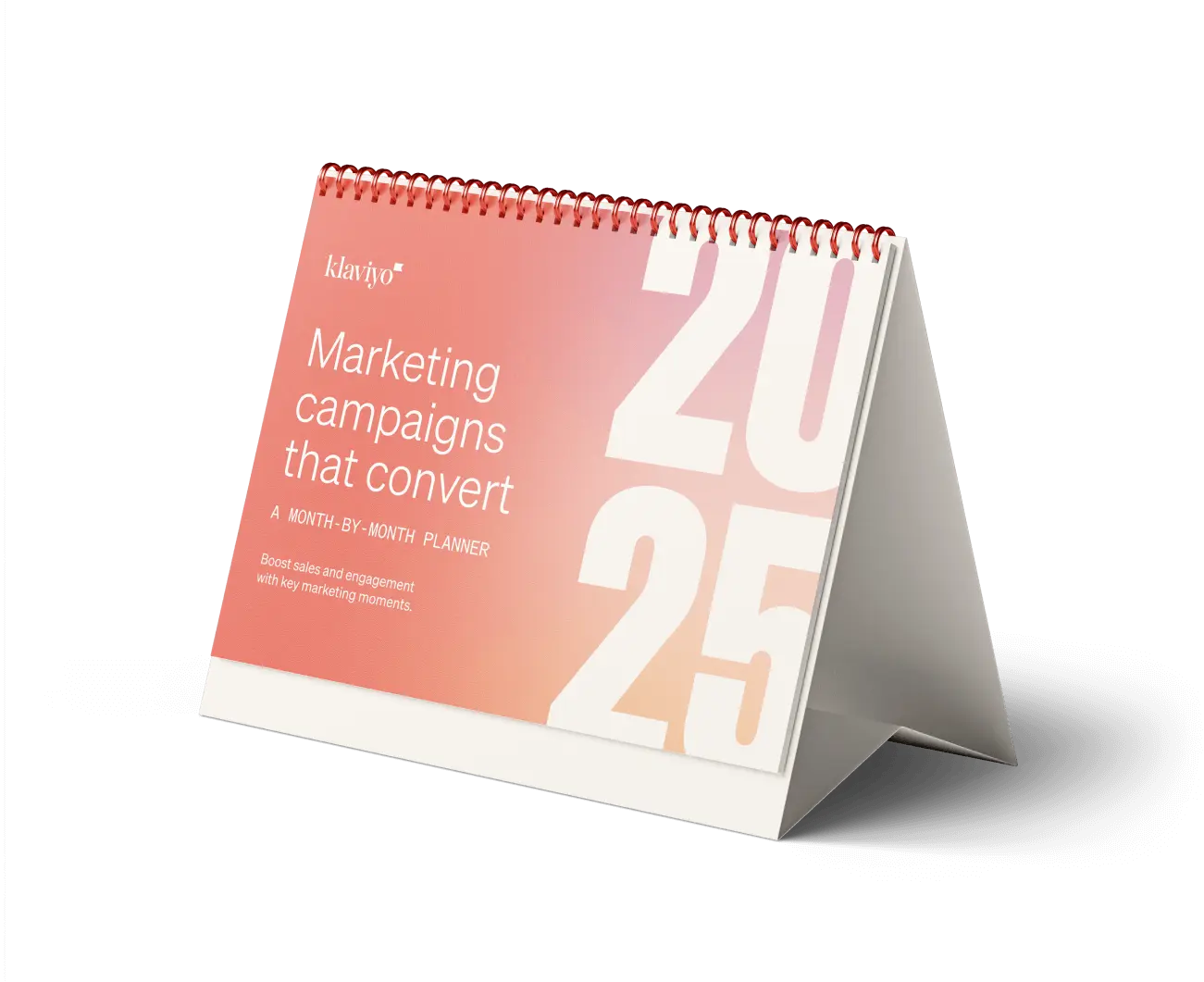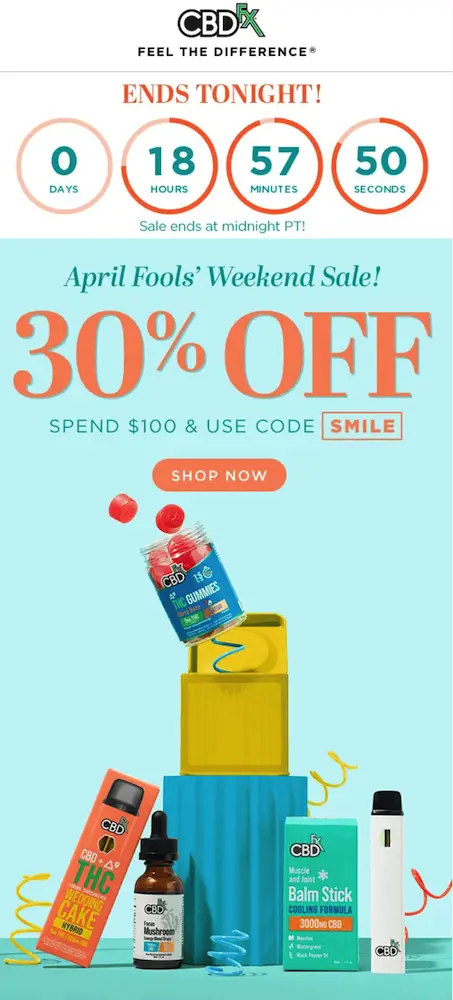6 April Fools’ Day marketing ideas that’ll have you laughing all the way to your revenue goals
Joke’s on you: April Fools’ Day may be one of the toughest days of the year for ecommerce brands to take advantage of.
Every day lately might feel like a cosmic joke, but on April Fools’ Day, it actually is. “Don’t believe everything you see online” hits new heights on April 1, and after so many brand fails over so many years, your audience is primed to tune out the noise on social media.
On this less-than-auspicious day, however, you can be the brand whose email marketing campaigns the inbox sacred.
Whether your marketing team wants to play it safe with an earnest discount or take a big swing with a thoughtful joke, you’ll need some inspiration in the form of email examples from brands that have survived another April Fools’ Day to tell the tale.

1. ScanCafe promises their steep discount is no hoax
ScanCafe, a photo scanning and restoration company, uses their headline space—prominently featured in the email design, with no distracting copy around it—to emphasize that the 60% discount they’re offering is not an April Fools’ Day joke.

Pro tip: If it makes sense for your economics, a discount that’s so steep it looks like a joke could make you stand out this April.
Black Friday Cyber Monday (BFCM) is far behind and far ahead on April 1, so you can bet your audience is ready for a mid-year discount that could match the likes of it. Just make sure you’re truly offering a discount—it may be April Fools’ Day, but people are serious about their cost savings.
2. Capsul invokes Black Friday with a “customize later” option
Similar to ScanCafe, Capsul Jewelry invokes BFCM early, just after April Fools’ Day. Here’s what makes their offer so great:
Capsul is offering 50% off—a significant discount. Invoking Black Friday, a holiday where big discounts are the name of the game, is bound to grab the audience’s attention.
The advertised April Fools’ Day sale not only has an imminent expiration date—this email went out the day the sale ended—but also reminds the reader that they’ll have to wait 6 months for another discount this big if they sleep on this deal.
Capsul gives their audience the option to customize their jewelry later on, while still reserving the 50% off discount. So, if you know you love the brand, you can save now—and worry about how to customize your purchase later.

Pro tip: As a marketer, you can make all sorts of promises or claims about what you’re trying to sell. But even if they’re valid, it’s hard to corroborate them or play the “take it from me” card when you stand to benefit financially if someone does actually take it from you.
Take a leaf out of Capsul’s book: Round out your April Fools’ Day email with social proof like starred product reviews or other user-generated content (UGC).
3. Pearson asks for forgiveness and offers useful content
Lots of brands send out practical joke emails on April 1. And some of those pay off, going viral and building brand awareness and credibility. Others, however, simply irritate subscribers—and can even erode trust among loyal customers.
So, how do you come back from a misfire?
Pearson, a brand that sells bikes, clothing, and equipment for cyclists, launched a product on April 1 that was, in their words, “too good to be true.” Not everyone caught the joke.
In this follow-up email, the brand apologizes and tries to make it up to their subscribers, keeping it lighthearted. The follow-up email begins, “to redeem ourselves for this foolery…” and references the fake product that sparked customer inquiries about the launch date, to make things crystal clear for anyone who may have missed the initial April Fools’ Day prank.

Pro tip: Notice that Pearson doesn’t offer an apology discount. Instead, they provide a link to sign up for a workshop, tongue-in-cheek nutrition advice tailored to cyclists, and a new ride route perfect for spring.
Just because it’s a holiday doesn’t mean you have to try to buy your customers’ love. Instead of incentivizing their business, see if you can build community through targeted email content.
4. CBDfx keeps things timely with a countdown clock
CBDfx, a CBD brand, celebrates April Fools’ Day by offering a 30% off coupon code with a hard deadline for when subscribers must complete their purchase.
But they also take the urgency one step further: They include a prominent countdown clock at the very top of the email.

Pro tip: Including a countdown clock ensures that, no matter what time the subscriber opens the email, they get an accurate, real-time understanding of how much time is left for them to take advantage of the sale.
Talk about personalization! It may be brass tacks, but it’s tailored to the subscriber’s experience nonetheless. Learn how to add a countdown timer to your emails.
5. Flock Foods takes snack time seriously
Let’s face it: Plenty of brands clutter subscribers’ inboxes with bad jokes on April 1. The day is basically a guarantee for even an active fan of your brand to potentially ignore an email from you.
So, if you’re serious about what you’re offering, make sure you let your customers know. Most of the brands we’ve looked at so far made clear that their sale was no joke, but snack brand Flock Foods drives it home with clarifying copywriting in 3 key places:
- Eyebrow copy
- Subhead copy
- Body copy

Pro tip: Almost nobody will read every word of your email. Make sure you reinforce your message in multiple areas so that even the most distracted reader gets the point.
6. PopFlex goes for the joke everyone knows
Here’s a less risky move—using your unique brand voice and identity to tell a joke your audience is already familiar with.
This April Fools’ email from athleisure brand PopFlex turns a common Instagram joke on its head with funny visuals of their “squatless yoga pants” that promise to “take you from pancake to peach emoji in 2 seconds.”

Pro tip: Know your audience. This is a…cheeky move, but the risk is diluted because the brand’s audience is in on the joke. Rather than feel slighted, there’s more of a chance that recipients will get it—and feel like they’re part of a community.


Related content

Learn 5 ways to turn new holiday shoppers into repeat buyers using personalization, seamless returns, targeted outreach, and AI-driven customer experiences.

Learn what to include in your photography style guide to create consistent, on-brand visuals across your B2C marketing channels.

Shopping is about to hit its peak season. But this year’s surge will look different from those before it. Instead of impulsive buying sprees, shoppers are entering the holidays with a more deliberate mindset.